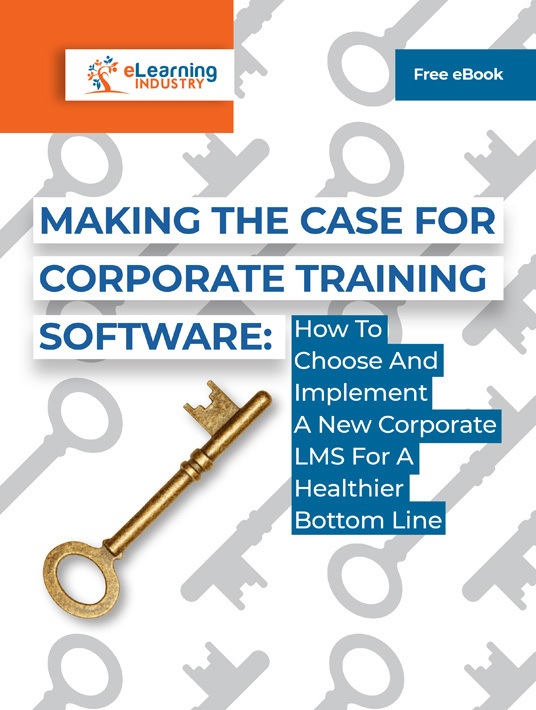Corporate Training Tools Your Sales Staff Expects To Find In The Corporate LMS
We all have preconceived notions about sales. Some of these perceptions hold merit. As a result, the average person has certain mental images when they log onto a sales class. These perspectives may be informed by personal experience or hearsay. What are some tools and features your sales team assumes your LMS should have? And how helpful are these assumptions to training sessions, or to sales process itself? Here are 6 essential corporate training tools that your sales staff expect when they log into the corporate LMS.

1. Product Demos
As a buyer, you’re probably drawn to a particular brand. Maybe it’s historically what your family used. Or maybe you like the packaging. Maybe it’s aspirational and you like its brand ambassador. From the salesperson’s perspective, they’d like you to buy whatever has the highest margin. But they also want your purchase to make you happy. It allows them to build rapport so it becomes more likely you’ll buy from them in the future. Product demos help them differentiate related products and show you how they’ll solve the customer’s problem. It marks them out as experts, which builds trust, leaving the door open for later sales.
2. Task Simulations
How exactly do you sell something? You might begin by sending the client a catalog. You might prepare a quotation or tabulate discounts. Or bundle the product and service with bonuses. You may even confirm delivery options and host a live demo, introducing the product or service to selected prospects. These are all different approaches to the sale. Use your corporate LMS to design simulations that allow trainees to practice each sales mode. They can try them all out, then pick the one that best fits their persona. But it helps to have options, in case they lend themselves better to a particular sales situation.
3. Sales Scripts
One of the easiest ways to introduce employees to sales is to give them a template. It should be something simple but comprehensive, something they can memorize. Learning the script by heart allows them to focus on actions, body language, and other sales cues. Their words are down-pat so they can divert mental processing power to other phases of the sale. It also gives them a base they can build on as they go through sales conversations. It’s not something they’ll always follow word for word but it’s a framework they can expand on. Expand on the typical pitch to add personal flair and customize it to suit the customer’s needs.
4. Opening Gambit Examples
In chess, there are specific opening moves called gambits. In sales, even with a script in mind, you may need a little help getting the conversation started. Your team will appreciate having a list of gestures, phrases, or techniques they can use to approach prospects using corporate training tools. Give them examples in various scenarios e.g. their kids’ school, at a party, in the supermarket, on the bus, etc. Because this course is designed via LMS, you can constantly add to the list. Whenever a sales team member tries a line and it works, encourage them to add it to the library. They can even get props. Routinely ask the team to rate openings based on success rate. Then every new trainee can view the list of top ten / twenty, with points, badges, or awards for its originator.
5. Closing Tactics
Along the same thread, employees want to know how to get the money. There have been endless situations where they chatted with a prospect for hours. But then they let them walk away because they couldn’t figure out how to round it up. An appendix of JIT closers helps. Use demos to display these finishers in action. Follow this up with simulations, cold call practice, and role play, so they can see their words in practice. Remember other elements, like tone and body language. It’s not always about the words.
6. Upselling Technique Tutorials
Depending on who you talk to, you’ll hear the second sale is easier than the first. Others will tell you every sale is the first. It’s about the kind of customer you have though. Some buy one product and keep it forever while others get every update that comes out. Still, your sales employees need some guidance in starting the conversation. How do they follow up with existing customers and get them to buy more? What are some typical customer objections and how are these addressed? Provide a workable starting point. You can even develop tutorials that walk them through the upselling process and pointers. That way, they can mimic these behaviors on the sales floor to seal the deal.
In a way, we all want to work in sales because the commissions plus loose working hours often seem attractive. On the other hand, the task of selling itself feels pretty daunting. What are your employees’ expectations for their sales training and how can you meet them? Product demos help them distinguish your brand offerings and position them in the best light. Task-based training digs into the various sections of the sale. Templates give them a starting point which they can tweak with relevant opening and closing tactics. Then, they need guidance on piggy-backing off existing sales for better profit. With this arsenal, your sales team will be well equipped to make the whole firm richer. And that’s always a good thing.
Getting new hires into the flow of your work-place is an essential corporate undertaking. How can you be sure you get it right? Download our eBook Making The Case For Corporate Training Software: How To Choose And Implement A New Corporate LMS For A Healthier Bottom Line and discover all you need to know so you can choose and implement a new corporate LMS.








